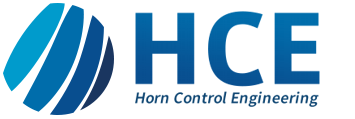Testing of electric motors
- Single-pole short circuit (earth fault)
Conducting connection of a conductor to the earth in nets with non-effective star-point treatment. Earth faults greatly interfere with the electrotechnical systems, because in the inductively earthed grid voltage increases occur in the conductors which are not affected by the ground fault, which frequently lead to two or three pole short circuits. In addition, overvoltages can occur due to the voltage increases in the network. Therefore, in the event of an earth fault, not only the current is the cause of the damage but, above all, the natural frequency of the network and its division into inductances and capacitances. In the compensated network there is a ground fault choke between transformer starter and ground. This has the task of compensating the capacitive current of the line in the event of an earth fault by an adjustable inductive current. An earth fault residual current remains, which is caused by the active resistors in the circuit. Furthermore, the earth-fault residual current is dependent on the setting of the ground-fault choke, ie on the over- or under-compensation of the mains. Earth faults in the inductively earthed grid can be operated up to a maximum of two hours depending on the power of the earth-fault choke. Earth faults are detected via the ground fault relay.
- Two-pole short circuit
Short circuit between two conductors of a system. A short-circuit current flows in both affected conductors. The voltage at the fault point is practically zero, but builds up towards the injection point. The apparent resistance at the short-circuit point is also the smallest and increases towards the feed-in point. The voltage and the apparent resistance of the fault loop are non-linear because they depend on the resistances at the short-circuit point (eg arc resistance). Furthermore, when the short-circuit occurs, electrical power is taken from the supply point, which is why the short-circuit current is also not a constant quantity. The short-circuit angle, which represents the phase shift between current and voltage at the fault point or in the short circuit, is always inductive. That is, the current follows the voltage.
- Three-pole short circuit
Short circuit between three conductors of a system. This fault is the largest load on networks and switchgear. For the most part, three-pole short-circuits are initiated by a single-pole earth fault or ground fault, which expands to a two- or three-pole short-circuit due to the arc migration and the voltage increase of the healthy conductors. Multi-pole short circuits with earth contact can also occur. These processes are unbalanced since not all conductors are affected uniformly. In the case of a three-pole short circuit without earth contact, virtually equal currents flow in all three conductors. These are driven by the star voltages of the feed point. The short-circuit angle is also inductive here, the current follows the voltage.
- Corporate body (resolution)
Conducting connection of a point of the winding of a rotating electrical machine with earth (housing). An earth fault current flows through the type of protective measures that are used, so that there is no risk of an iron burn in the current path. There is an increase in the conductor-to-earth voltage in the conductors which are not affected.
- Rotor ground
Conducting connection of a point of the rotor winding of a rotating electric machine to ground. This error remains unimportant at first, but involves the risk of expansion to the rotor double-ended.
- Interturn
Bridging windings within a winding. As an effect, the phase voltages as well as the conductor-to-conductor voltages are shifted. This results in a sliding load. In generators, an inverse rotating field is created in the rotor.
- Winding circuit
Conductive connection between two different windings of an electrical machine. This results in a partial short-circuit current as well as a voltage drop in the affected conductors.
- Open circuit
Unintended interruption of a conductor in the three-phase system. This fault results in a current interruption and a power failure of the affected conductor. The system transitions to Schieflast.
We inspect your engine directly on the spot and repair it or provide replacement parts as quickly as possible.

